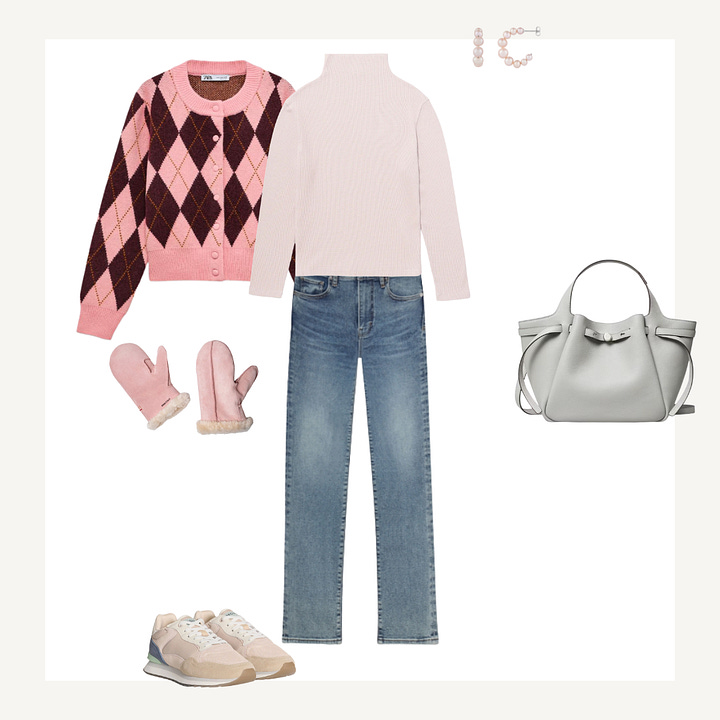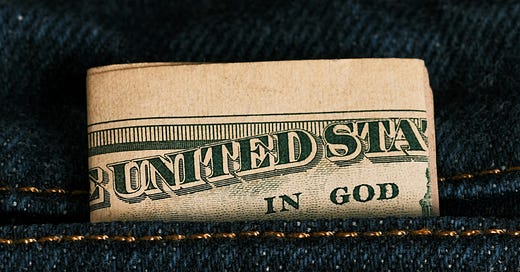As I sat at my son’s baseball practice last weekend, a few moms and I found ourselves in a familiar conversation—commiserating over rising grocery prices. From muffins that once felt like a simple treat to staples like eggs now causing a double-take at checkout, everything costs more these days, and we’re all feeling the pinch. As someone who makes styling recommendations, I’ve been watching a similar trend unfold in fashion. Clothing and accessories prices have climbed steeply—sometimes dramatically—over the past few years. Whether it’s luxury brands pushing exclusivity through aggressive price hikes or mid-tier retailers adjusting to inflation and supply chain challenges, fashion has become noticeably more expensive across the board.
At the same time, quality isn’t always keeping pace with rising prices. A $1,000 wool coat today might not be any better than one that cost $600 five years ago. The price of the classic Chanel flap bag has doubled over the last five years, yet the design and materials remain unchanged. Shoppers are left wondering: How can we ensure that our purchases are truly worth the investment?
Last year, I wrote about Cost Per Wear (CPW), a concept I’ve long used to evaluate my own wardrobe and guide my clients toward smarter purchases [read the article here]. While the topic may be a little dry compared to articles on personal style, its core message remains more relevant than ever: the smartest wardrobes are built on pieces that justify their cost through frequent, long-term wear.
Fashion prices may be rising, but the real challenge isn’t just the cost—it’s making sure what you buy earns its place in your wardrobe. We’ve all made those purchases that felt like a great idea in the moment but ended up collecting dust in the closet. On the other hand, there are those tried-and-true staples we reach for again and again, more than justifying their price. The key to shopping smarter isn’t about spending more or less. It’s about spending wisely.
Before making a purchase, consider the bigger picture
When I work with clients to edit their wardrobes, I often witness a common dilemma: overflowing closets filled with relatively inexpensive items. These pieces often end up relegated to the back of the closet, rarely worn. While they may have seemed like budget-friendly choices at the time, their lack of use leads to a high CPW, making them inefficient and, ironically, costly. The accumulation of these seldom-worn items can quickly add up to an unexpectedly expensive collection, which, in itself, can create a barrier to investing in more practical pieces. By considering how often an item will be worn and how it truly fits into your life before you buy it, you can avoid purchases that feel affordable in the moment but ultimately prove wasteful.
Pondering a few questions can help ensure that your purchases will truly add value to your wardrobe:
1. Is this piece reflective of my personal style?
Trends come and go, but personal style endures. If the piece doesn’t feel like something you’d wear often or doesn’t align with the core elements of your wardrobe, it’s probably not worth the investment. If you’re unsure about your personal style, I’ve recently written a few articles on the topic [linked here, here, and here]. Alternatively, you can reach out to work directly with me, and I’ll help define your style by identifying the colors, silhouettes, textures, patterns, and details that best complement you, distilling my recommendations into a single page that you can refer to when shopping and planning outfits.
2. Do I have an occasion to wear this item?
If the item doesn’t fit into your everyday lifestyle or isn’t suitable for specific occasions, it’s likely not a necessary addition. Aim for pieces that you’ll get regular use out of, which will help lower your CPW. The more often you wear a piece, the easier it is to justify its price. A piece that lacks utility is more likely to remain unworn, preventing you from getting full value from it.
3. Do I already own something similar?
Before making a purchase, take stock of what’s already in your wardrobe. If you have an item that serves the same purpose or provides a similar look, it might be unnecessary to add another one to your collection. By considering what you already own, you can avoid duplicating pieces and keep your wardrobe streamlined.
4. Can I create at least three different outfits with this item?
Versatility is essential when making smart purchases. If you can’t come up with at least three distinct outfits using the item (assuming it’s not an occasion dress!), it’s probably best to wait for something more functional and adaptable to come along.
5. Can I style this item in different ways for different seasons?
An item that works across seasons offers greater value than one limited to a single season. Look for versatile pieces that can be layered with other items or accessorized to adapt to different weather conditions and occasions, as illustrated in the following example.


For more inspiration, I’ve been sharing outfits from the four Winter capsule wardrobes I posted in January [see them here], along with updates that feature small edits to help transition the wardrobes into Spring, on my Instagram @the.stylish.sabbatical.
6. Is this item made with quality that justifies its price?
It’s important to assess whether the craftsmanship, materials, and durability of an item align with its price. You don’t always have to pay top dollar for quality. Sometimes, a well-made, affordable sweater will serve you better in the long run than a pricey, delicate one that doesn’t hold up after a few washes. However, if a higher price is justified by superior quality, longevity, versatility, or better alignment with your style guardrails, it can still be a worthwhile investment.
Final thoughts
In a time when clothing prices are climbing faster than ever, the smartest shoppers aren’t just looking at price tags; they’re thinking about value. A wardrobe full of thoughtfully chosen, well-made pieces will always serve you better than a closet filled with impulse buys.
Before making your next purchase, pause and ask yourself: Is this truly a smart choice for my wardrobe? And if you need help making that decision, feel free to reach out to me for personalized guidance.





